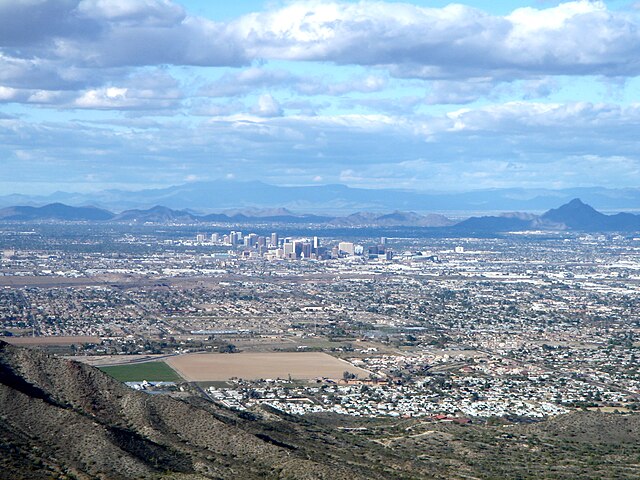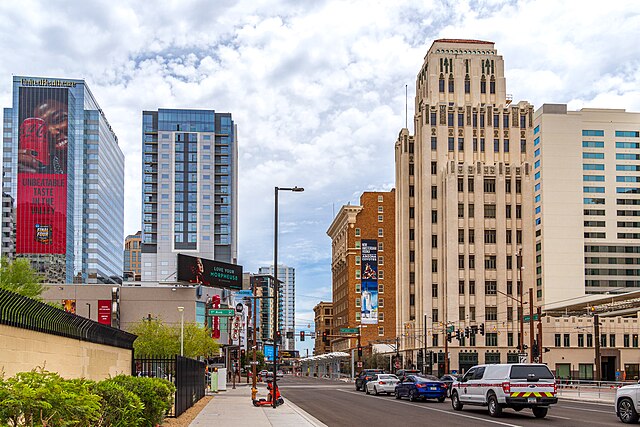Understanding Phoenix’s Desert Climate
Have you ever wondered what makes Phoenix weather so unique? Located in the heart of the Sonoran Desert, Phoenix experiences what meteorologists call a hot desert climate, characterized by scorching summers and mild winters. This desert oasis sits at approximately 1,086 feet above sea level, surrounded by mountain ranges that significantly influence its weather patterns.
Phoenix’s climate is defined by two distinct seasons rather than the traditional four. The city receives an average of 300 sunny days per year, making it one of the sunniest places in the United States. With less than 8 inches of rainfall annually, Phoenix truly embodies the desert experience.
The city’s location creates a unique microenvironment where temperature variations can be dramatic. During summer days, temperatures soar above 100°F, while winter nights can dip into the 40s. This extreme temperature range is a hallmark of desert climates, where the lack of moisture in the air allows heat to escape rapidly after sunset.
Seasonal Weather Patterns in Phoenix

Phoenix’s weather follows a predictable yet fascinating pattern throughout the year. Unlike many regions that experience gradual seasonal transitions, Phoenix weather can shift dramatically within days. Understanding these patterns helps residents and visitors alike prepare for what Mother Nature has in store.
The city’s weather calendar is essentially divided into two main seasons: the hot season (roughly April through October) and the mild season (November through March). However, within these broad categories, there are distinct periods that bring their own unique characteristics and challenges.
Spring Weather in Phoenix (March-May)
Spring in Phoenix is absolutely magical – it’s like nature’s way of apologizing for the brutal summer ahead. March kicks off with comfortable temperatures ranging from 45°F to 75°F, perfect for hiking, golfing, and outdoor festivals. This is when the desert comes alive with wildflower blooms, creating a stunning contrast against the rugged landscape.
April and May see temperatures gradually climbing, with highs reaching into the 80s and 90s. The weather remains relatively dry, with occasional light rain showers that bring the sweet scent of desert plants. Spring is considered peak tourist season for good reason – the weather is simply perfect for outdoor activities.
During this period, you’ll experience cool mornings that gradually warm throughout the day. It’s not uncommon to start your morning in a light jacket and end your afternoon in shorts and a t-shirt. The evenings remain pleasantly cool, making it ideal for dining al fresco or attending outdoor events.
Summer Heat: Phoenix’s Infamous Hot Season (June-August)
When summer arrives in Phoenix, it doesn’t mess around. From June through August, the city transforms into what locals playfully call “the surface of the sun.” Daily temperatures consistently exceed 100°F, with peak temperatures often reaching 115°F or higher.
The heat in Phoenix is different from humid climates – it’s a dry heat that feels like opening an oven door. While some argue that dry heat is more bearable than humid heat, anyone who’s experienced a Phoenix summer knows that 115°F is hot regardless of humidity levels.
Dealing with Extreme Summer Temperatures
Surviving Phoenix summers requires strategy and respect for the heat. Locals adapt by shifting their schedules – early morning and late evening become prime times for outdoor activities. The period between 10 AM and 6 PM is generally avoided for any strenuous outdoor work.
Air conditioning becomes a necessity, not a luxury. Most Phoenix residents see their electricity bills spike during summer months as cooling costs soar. Many people plan their vacations during peak summer, escaping to cooler climates while tourists from even hotter regions visit Phoenix.
Monsoon Season: Arizona’s Summer Surprise
Here’s where Phoenix weather gets really interesting. From mid-July through September, the North American Monsoon brings dramatic weather changes to the desert. These aren’t your typical gentle summer rains – monsoon storms can be intense, featuring powerful winds, heavy downpours, and spectacular lightning displays.
Monsoon storms often develop in the afternoon or evening, bringing brief but intense rainfall that can cause flash flooding in desert washes. The storms also provide temporary relief from the heat, dropping temperatures by 10-20 degrees and bringing much-needed moisture to the desert ecosystem.
Fall Weather: Perfect Phoenix Conditions (September-November)
Fall in Phoenix is like hitting the weather lottery. September still carries summer heat, but by October, temperatures become absolutely perfect. Daily highs range from the 80s to low 90s, with nighttime temperatures dropping into the comfortable 60s and 70s.
This is when Phoenix truly shines as a destination. The oppressive heat lifts, outdoor activities resume, and the city comes back to life. Golf courses fill up, hiking trails become crowded, and restaurant patios reopen for the season.
November brings some of the most pleasant weather you’ll find anywhere. Daytime temperatures hover in the 70s and 80s, while nights can be cool enough to require a light sweater. It’s perfect weather for everything from outdoor concerts to backyard barbecues.
Winter in the Desert: Phoenix’s Mild Season (December-February)
Phoenix winters are the stuff of legends – at least for those escaping colder climates. While much of the country deals with snow and freezing temperatures, Phoenix enjoys mild, pleasant weather that rarely requires more than a light jacket.
Daytime temperatures typically range from 60°F to 70°F, while nighttime lows can dip into the 40s or occasionally the 30s. Frost is rare but not impossible, particularly in outlying desert areas. Most winter days are sunny and clear, perfect for outdoor activities that would be impossible in other parts of the country.
Winter is also Phoenix’s wettest season, though “wet” is relative – the city might receive 2-3 inches of rain during the entire winter months. When it does rain, it’s usually gentle and brief, followed by clearing skies and fresh, clean air.
Daily Weather Variations and Microclimates
One of the most fascinating aspects of Phoenix weather is how dramatically it can vary throughout a single day. Desert climates are known for extreme temperature swings, and Phoenix is no exception. A typical summer day might start at 85°F at sunrise and climb to 115°F by mid-afternoon.
The city’s sprawling metropolitan area creates numerous microclimates. Areas closer to the mountains tend to be slightly cooler, while the urban core experiences the “heat island effect,” where concrete and asphalt absorb and radiate heat, making temperatures even higher.
Elevation plays a crucial role too. Areas like Ahwatukee or Paradise Valley, which sit at higher elevations, can be 5-10 degrees cooler than downtown Phoenix or the airport area. Even a few hundred feet of elevation change can make a noticeable difference in comfort levels.
How Phoenix Weather Affects Daily Life
Living in Phoenix means your entire lifestyle revolves around the weather. Summer months dictate a completely different rhythm of life compared to winter. Many residents become semi-nocturnal during summer, conducting outdoor activities before sunrise or after sunset.
The extreme heat affects everything from clothing choices to home design. Houses in Phoenix are built with weather in mind – tile floors stay cooler than carpet, window tinting is essential, and swimming pools are nearly mandatory rather than luxury items.
Best Clothing Choices for Phoenix Weather
Dressing for Phoenix weather is an art form. Summer requires lightweight, light-colored, breathable fabrics that provide sun protection. Long sleeves might seem counterintuitive in extreme heat, but they actually protect skin from harmful UV rays and can be cooler than exposed skin.
Winter clothing needs are minimal – a light jacket or sweater is usually sufficient for the coldest days. Many Phoenix residents own more swimwear than winter coats, which tells you everything you need to know about the climate priorities.
Outdoor Activities and Weather Considerations
Phoenix’s weather creates a unique outdoor activity calendar. Hiking, golf, and tennis are prime winter and spring activities, while summer outdoor recreation shifts to very early morning or late evening hours. Many golf courses offer twilight rates because playing in the afternoon heat simply isn’t enjoyable or safe.
Water activities become essential during summer months. Swimming pools, water parks, and lakes provide necessary relief from the heat. Even activities like walking the dog require careful timing and preparation during peak summer months.
Phoenix Weather vs. Other Major Cities
How does Phoenix weather stack up against other major cities? Compared to humid climates like Miami or Houston, Phoenix’s dry heat can feel more bearable despite higher temperatures. However, the lack of humidity also means less natural cooling from evaporation, making air conditioning absolutely essential.
Cities like Las Vegas share similar desert climates, but Phoenix tends to be slightly hotter due to its lower elevation and urban heat island effect. Compared to northern cities like Chicago or New York, Phoenix offers the obvious advantage of mild winters but the challenge of extreme summer heat.
The sun in Phoenix is particularly intense due to the high elevation and clear skies. UV levels are consistently high, requiring serious sun protection year-round. This is one area where Phoenix weather demands respect and preparation.
Climate Change Impact on Phoenix Weather

Climate change is affecting Phoenix weather patterns in measurable ways. Average temperatures have risen over the past several decades, and extreme heat events are becoming more frequent and intense. The city now experiences more days above 110°F than in previous generations.
Precipitation patterns are also changing, with some years seeing more intense monsoon activity while others experience drought conditions. These changes have significant implications for water resources, energy consumption, and urban planning in the Phoenix metropolitan area.
Scientists predict that Phoenix will continue to experience hotter temperatures and more extreme weather events. This makes understanding and adapting to the current climate even more important for residents and visitors.
Weather Forecasting and Staying Informed
Staying informed about Phoenix weather is crucial, especially during extreme weather events like dust storms or severe monsoon activity. The National Weather Service provides detailed forecasts and warnings specific to the Phoenix area.
Local weather apps and services offer real-time updates on temperature, air quality, and severe weather alerts. During summer months, heat advisories and excessive heat warnings are common, providing important safety information for outdoor activities.
Weather radar becomes particularly important during monsoon season, as storms can develop quickly and produce dangerous conditions like flash flooding and damaging winds. Many residents check weather apps multiple times daily during peak summer months.
Conclusion
Phoenix weather is a study in extremes – from the perfect mild winters that attract visitors from around the world to the intense summer heat that tests human endurance. Understanding these patterns is essential for anyone living in or visiting the Valley of the Sun.
The city’s desert climate creates unique challenges and opportunities. While summer heat requires adaptation and respect, the mild winters and pleasant spring and fall seasons offer outdoor recreation opportunities that are simply impossible in many other parts of the country.
Whether you’re planning a visit, considering relocating, or already call Phoenix home, appreciating the nuances of desert weather helps you make the most of what this unique climate has to offer. From the spectacular lightning shows of monsoon season to the perfect golf weather of winter, Phoenix weather is never boring.
Frequently Asked Questions
1. What is the hottest month in Phoenix?
July is typically the hottest month in Phoenix, with average high temperatures reaching 106°F. However, June and August are nearly as hot, and the entire period from June through August consistently sees temperatures above 100°F daily.
2. Does it ever snow in Phoenix?
Snow in Phoenix is extremely rare but not impossible. The last measurable snowfall in the city occurred in 1998, and before that in 1990. When snow does occur, it’s usually very light and melts quickly due to the warm ground temperatures.
3. When is the best time to visit Phoenix weather-wise?
The best time to visit Phoenix is from November through March, when temperatures are mild and comfortable for outdoor activities. December through February offers the most pleasant weather, with daytime temperatures in the 60s and 70s.
4. How dangerous is the summer heat in Phoenix?
Phoenix summer heat can be deadly if proper precautions aren’t taken. Heat-related illnesses are a serious concern, and the city typically sees heat-related deaths each summer. It’s essential to stay hydrated, limit outdoor exposure during peak hours, and recognize signs of heat exhaustion.
5. What should I expect during Phoenix’s monsoon season?
Monsoon season (July-September) brings dramatic afternoon and evening thunderstorms with heavy rain, strong winds, and spectacular lightning. These storms can cause flash flooding and dust storms but also provide relief from summer heat and create some of the most beautiful weather displays in the country.

